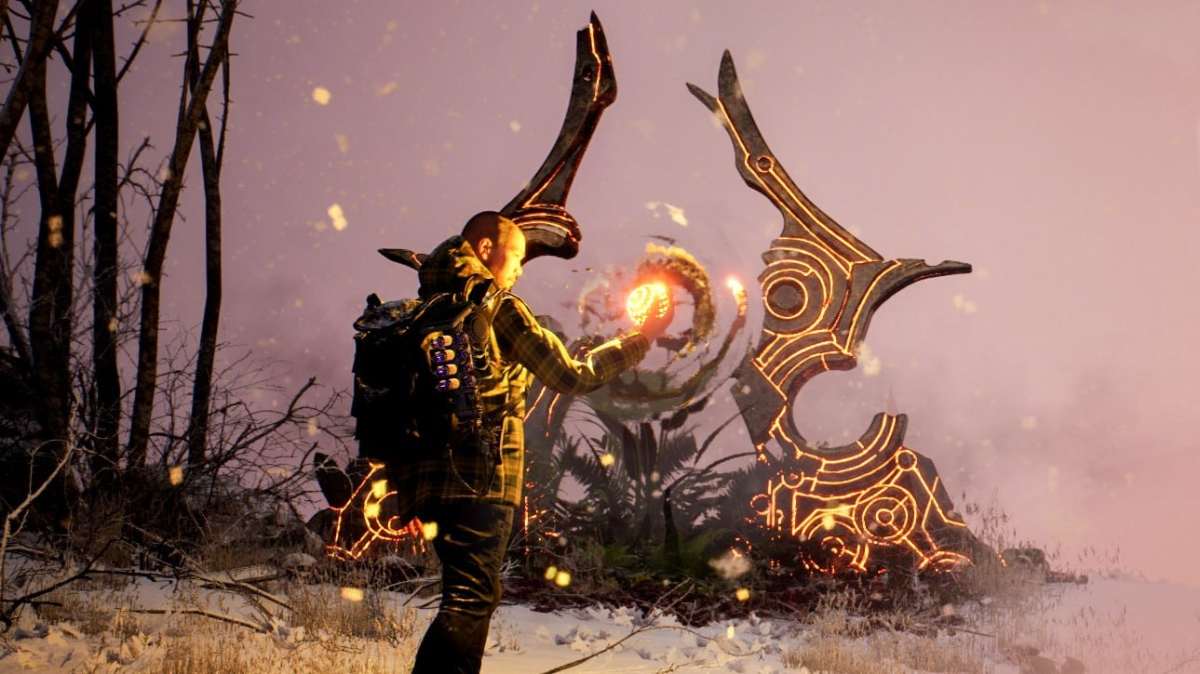When you watch the trailer for Macabre, you immediately know what you’re in for. Bushfire-burnt trees puncture the landscape like fingers punching up from the grave. Ash and snow litters the ground and fills the air. Alien-like objects stand seemingly untouched amongst it all. And somewhere nearby, the growl of a monster hints at something terrifying in-store. But there’s an element at play in Macabre that stands out just a little bit more than the rest.
All the accents you hear are Australian.
‘We’re both proud Australians,’ says Jay Topping, one of the co-founders of Weforge Studio and the Creative Director of Macabre. ‘And we play a shitton of games and watch a shitton of movies. And it seems like every single time you see an Australian character depicted [in a blockbuster], it’s either some knife-wielding psychopath who is from the bush saying, “Oi’ll fuckin’ shank ya!” like Ivan Milat, right? Or it’s some other comical stereotype of an Australian.’
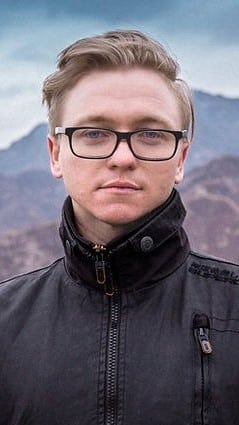
‘We wanted to make a game set in Australia that goes deeper than the typical tropes, to show that our stories can be enjoyed across the world, that [the accent] is not just a niche comedic effect you chuck in to fill a void. That we can tell a uniquely Australian narrative with multidimensional characters. It’s like – we want to put prawns on the barbie.’
Jake Davey, the other co-founder at Weforge Studio and Game Director on Macabre, agrees. ‘Personally, I feel like it’s easier to draw inspiration on the direction of the game through our lived experiences and from our direct surroundings. We’re going to come up with something much more genuine if we’re creating something that we really know. Rather than trying to emulate a random location we know nothing about that’s super far away, we’ve been to the locations that we’re exploring in the game.’
With Macabre, that means work begins within Kosciuszko National Park, some 500 kilometres away from where Weforge Studio is based in Sydney, Australia.
‘We’re currently re-building our forest to use Snow Gums,’ explains Jay, talking about the iconic Eucalyptus trees that cover high altitude parts of Australia’s East coast. ‘[We want it] to look much more representative of the Snowy Mountains down in the Thredbo and Perisher area.’
Thredbo and Perisher are ski resorts in the Kosciuszko National Park and for a lot of Aussies, the first place they see snow. Ever. That gives it a sort of magic power to a lot of Australians, and it’s that magic Macabre hopes to tap into.
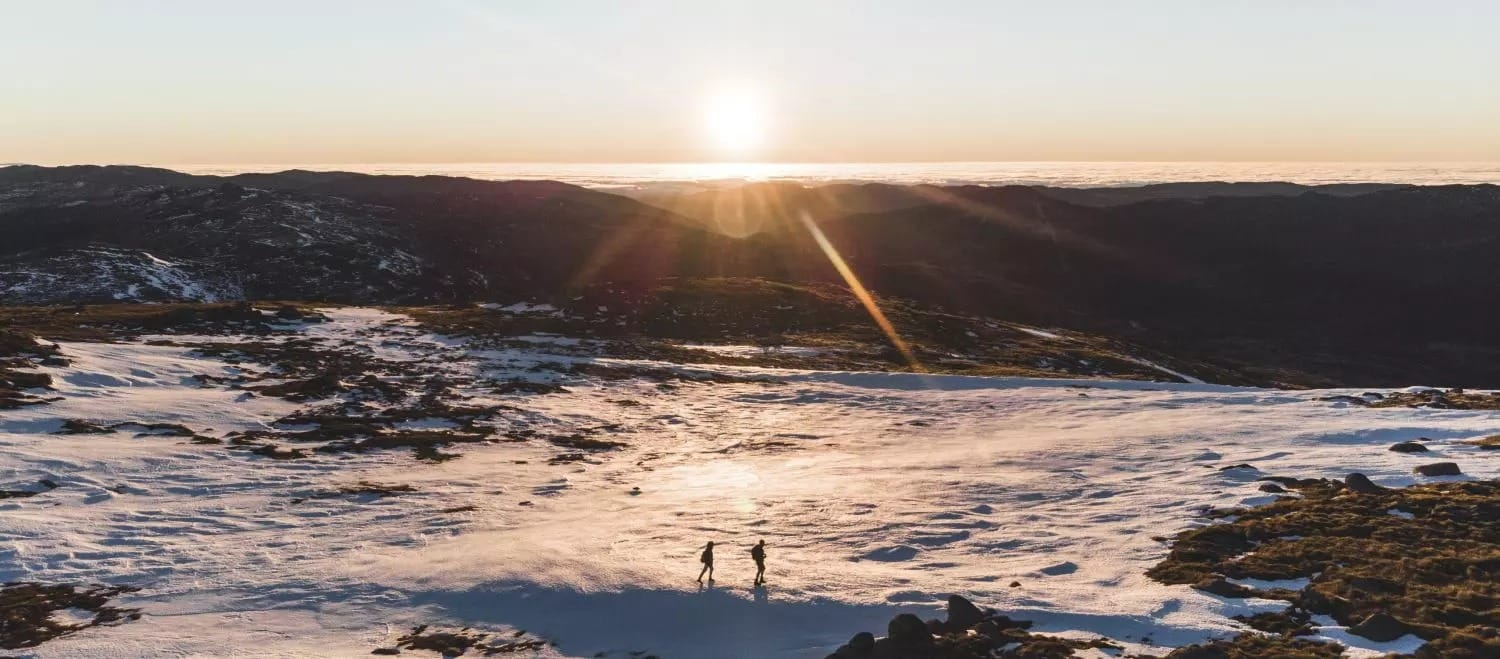
But Weforge Studio isn’t stopping there – Macabre is set in a sort of pocket dimension area, so the environments the game visits aren’t limited by geography. The underground dwellings of Coober Pedy, an Opal mining town in South Australia, strike the pair as an intriguing location that would provide a twist on the classic ‘Aussie Outback’ biome people are used to.
‘Obviously, an Outback setting can be really scary because it’s so isolating,’ Jay says. ‘But I think Coober Pedy is more interesting than just the Outback, there’s something really special about it. When you go there, it seems like something from another world.’
The town, built off the back of an Opal mining industry and set in the ochre red of the Australian desert, features a host of dwellings built directly into the hillsides themselves, giving the place a desert-sand Hobbiton sort of feel.
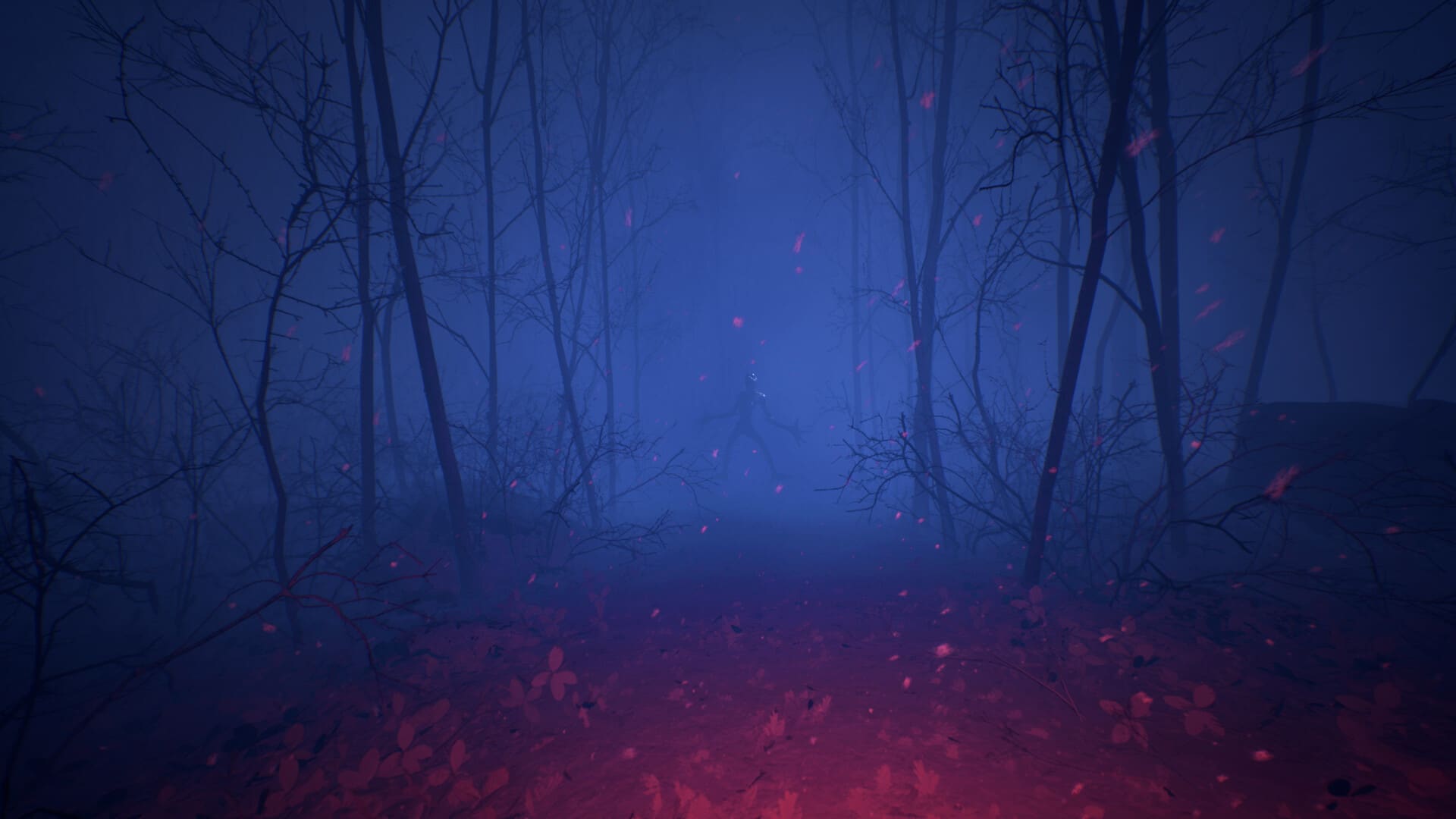
‘I know it doesn’t work like this,’ Jay continues. ‘But if you could have mineshafts and tunnels that connect and interlink with the underground dwellings, and then the only way to escape is to get back up to the surface for a brief respite of sunlight before having to delve back into the caverns – that would be a really terrifying place to explore [in Macabre].’
Balancing the desire to escape and the lure to delve back in again is at the core of what makes Macabre tick. Billed as a ‘Stealth Extraction Horror’ game – a twist on more than a few already existing genres – Macabre wants players to ask themselves whether they need to get out or risk it all by staying a little longer.
‘In the first chapter you spawn in an area within the rift on the snowy mountains,’ explains Jake, on the concept of Stealth Extraction Horror. ‘And you’ll be tasked with searching the abandoned lodges on the mountain. And as you explore, you’ll start to find clues and puzzles and potentially items that you can scavenge and pick up and collect.’
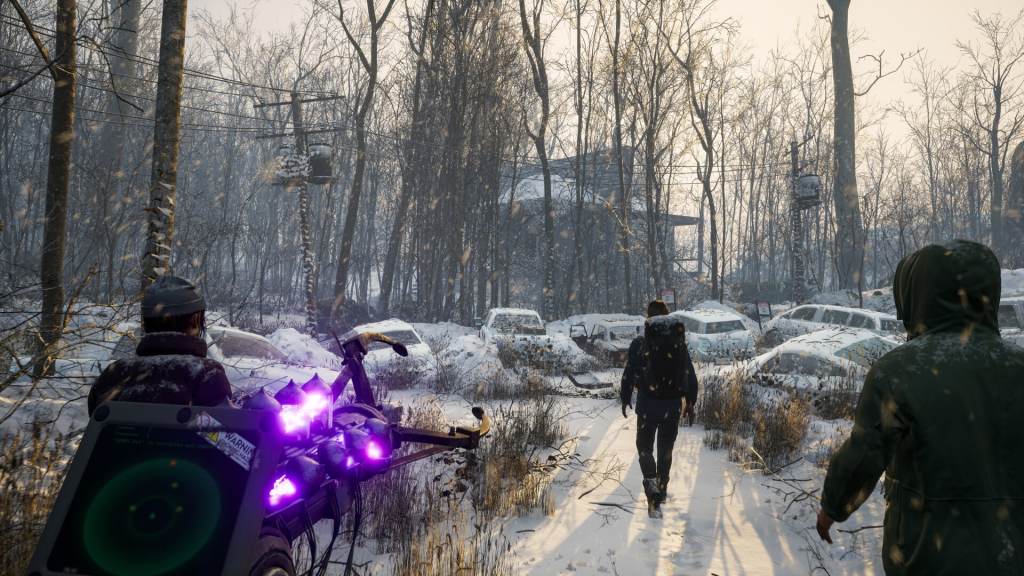
‘Whilst you’re out there, the monster will also be interacting with you. Depending on how far you are through the level, where you’re going, if you stay in one place for too long, if you split up or if you stay together – all these different elements will inform your interactions with the AI, and you’ll need to figure out how to survive.
‘And if you do manage to survive, it might be advantageous to extract from the map with the items that you’ve collected or the quest objectives that you’ve found. To go back and trade with Banjo [An NPC] and build up your gear and equipment, giving you a better chance of surviving the next time.’
As Jay and Jake talk through the game experience, the conversation is littered with references to the other games they’ve taken inspiration from. Alien: Isolation is a big one, and getting the interaction between the player and the monster is critical to Macabre’s success. The extraction element comes from their time playing Escape from Tarkov – where players walk a tightrope of risk vs reward as they make their way in and out of zones.
But perhaps the biggest influence in the game is Phasmophobia – the four-player co-operative ghost hunting game that took the internet by storm when lockdowns gripped worldwide at the beginning of 2020.
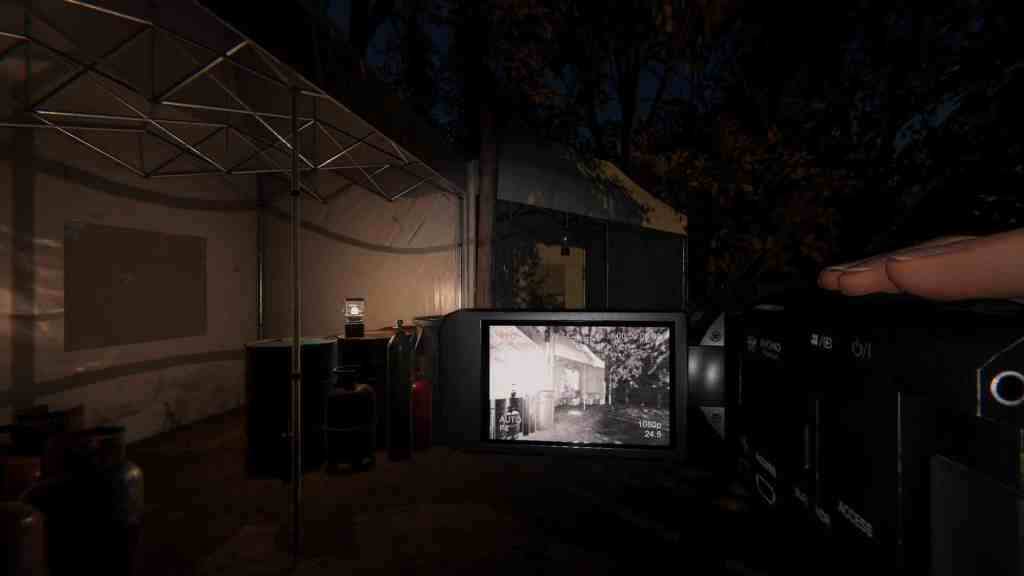
‘During COVID we played Phasmo[phobia] because it was blowing up at that time,’ Jay says. ‘And it definitely rekindled something in me from when I was a kid. It was like, ‘Oh, holy shit, horror games are actually really, really fun if you can play them with your friends.”
And multiplayer is what makes Macabre special. It’s what makes it so much more tantalising an experience. In a game where extracting with your hard-won items is the key, you don’t need to be faster than the monster to get away – you just need to be faster than your teammates.’

‘There’s something Jake said the other day, that I thought described it very nicely,’ Jay tells us. ‘There’s the main monster, but then there’s all these other little monsters – your friends and players that you come across. You won’t be rewarded for working together in a “points-based” way, the reward is that you’re less likely to die, because there are more of you looking out for each other. On the other hand, there’ll be less loot to go around. So it could be quite advantageous to split up and find your own things, and, you know, maybe a friend or two don’t make it to extract.’
But Macabre won’t be a PVP game – at the end of the day, it will be players versus the environment, and the dangers that lurk within it. So you won’t be directly attacking your teammates – maybe just disrupting their efforts to survive.
‘There’s enough leeway to either help or really not help someone via different mechanics when it comes to how you navigate the environment,’ Jake says. ‘If you think you’re both going to die in a scenario, you might choose to throw a rock at [your teammate] to lure the monster and then make a run for it through the back door.’
‘Maybe you lock the door behind you,’ Jay interjects with a tone that speaks of experience.
‘Yeah,’ Jake continues, laughing. ‘It’s like, “I’ve got the better loot, see you later!” But personally, I know if I was to mess with Jay and lock him in a room, which I have done in many video games, he would probably try to get back at me in the next round, or maybe a few rounds later, when I wouldn’t expect it.’
‘It’s about trying to create situations where there’s a lot of choices [for players] so if you wanted to just go in full teamwork style and work as a calculated unit, that’ll be fun, too.’
Jay and Jake talk about how playing solo is also a viable style of play – and how they plan on implementing matchmaking systems too, for those who don’t want to face the terrors of a reality-shifted Australia alone. As far as roadmaps go, Weforge has charted one well.

The public will get their first opportunity to play Macabre at the Powerhouse Late: Gaming event on 28 September 2023, followed by SXSW Sydney, from 15-23 October 15 2023. Jake and Jay are excited to get their game in people’s hands, but it will be a valuable learning experience for them as well.
‘I’m keen to see the different playstyles,’ Jake says. ‘[We want to] test different groups of people to see how they interact with the experience and get their feedback.’
‘It’s going to be a really great controlled environment to have people test out the game,’ Jay says. ‘And because both the Powerhouse event and SXSW Sydney will feature different demos, I think we’ll be able to get different information from each.’
As for people who aren’t heading to the Powerhouse event or SXSW Sydney—when can they get their hands on Macabre? It’s a nerve-wracking question for Jay and Jake.
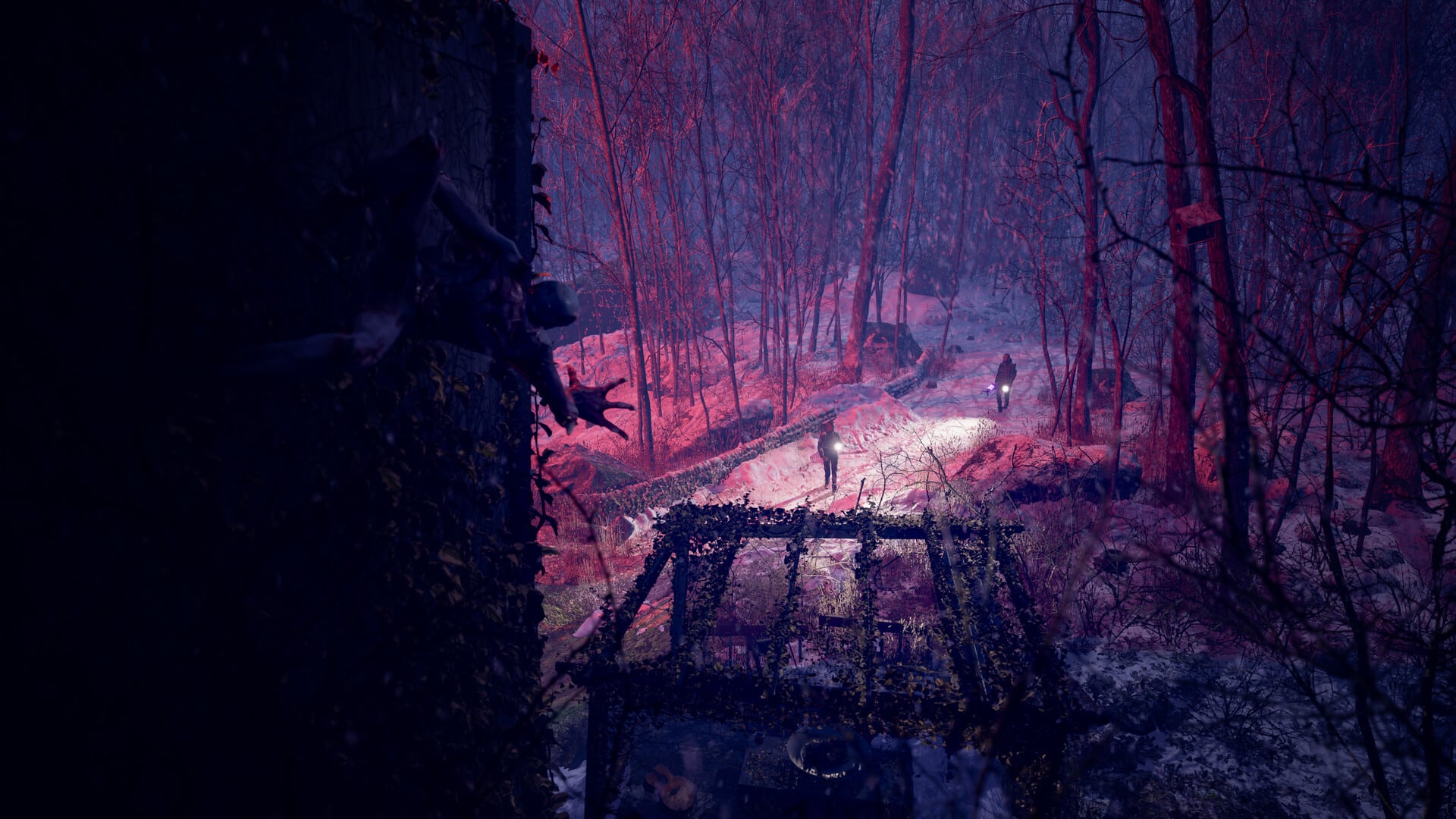
‘It’s a difficult question because…’ Jay says, pausing to choose his words carefully. ‘We don’t want to promise something we can’t deliver on. We’ve got a date in mind internally, but we’d rather wait until we’re 100% confident before publicly announcing it. It’s not like it’s years off, our plan is to release Macabre in chapters, each with its own location and monster, with our focus on a highly replayable game loop.’
‘[As Jay said] The first chapter won’t be years and years away,’ Jake adds. ‘We’ve got a trailer out, we’re gearing up to get [the game] out there as soon as we possibly can. But with game development, you know, it’s a ‘how long is a piece of string’ kind of a deal. And I think there’s still a lot of testing to be done before it’s to the point where we feel like it’s a really fun and valuable experience. Where people can purchase it and go, “I got my money’s worth”.’
You can wishlist Macabre on Steam.
